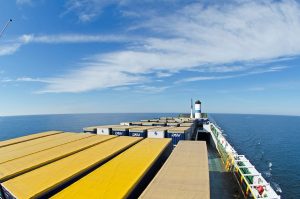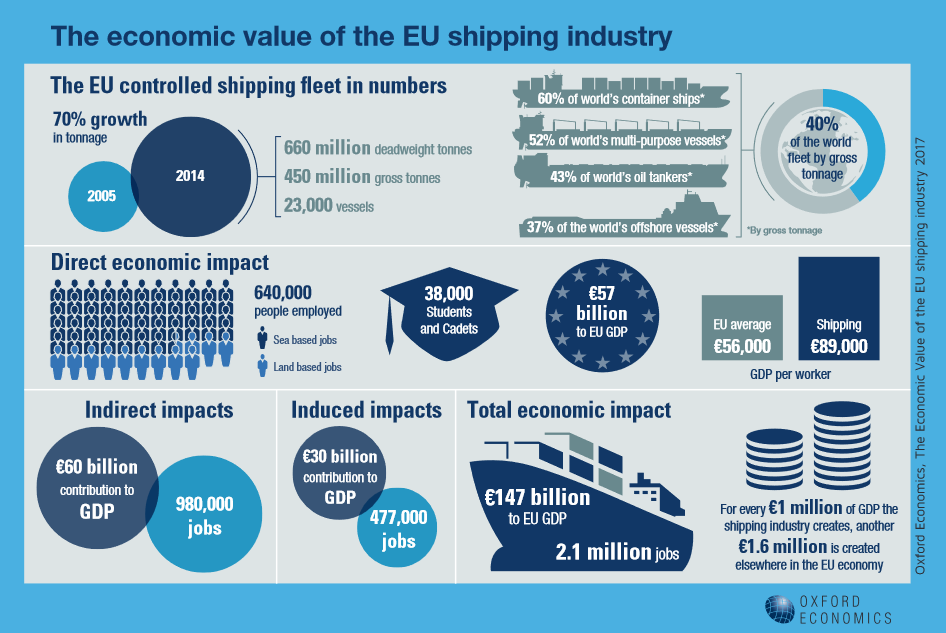Key figures of maritimetransport in Finland
The majority of goods flows in Finland’s foreign trade go by sea. In 2022, the share of sea transport in Finland’s foreign trade increased ten percent from the level of 2021 and was 92.4 percent. Sea transport accounted for 94% of Finland’s exports and 91.1% of imports.
During 2022, the goods volume of foreign sea transport was in total 94.8 million tonnes. The amount of transports stayed quite the same as the year before and was 67 % of the level before the pandemic in 2019. Of this, transit transport decreased with 38 % compared to the year before, when it was made up nine per cent, or 8.2 million tonnes, and dropped to 5.1 million tonnes. The decrease in traffic can be explained by the Russian attack to Ukraine, which stopped the transportation to Russia almost completely.
General cargo was transported most, followed by oil products and crude oil, which made up 41 % of all goods in transportation. The types of goods imported most, general cargo and crude oil, ore and concentrate. Most exports were of general cargo, paper and oil products. The busiest ports for goods transport were Sköldvik, HaminaKotka, Helsinki, Raahe and Hanko.
The transport performance of foreign sea transport totalled 267.4 billion tonne-kilometres. The transport performance of exports amounted to 145.5 billion tonne-kilometres and that of imports to 121.8 billion tonne-kilometres. In all, 69 per cent of goods imported by foreign sea transport came from countries in the Baltic Sea area and only 11 per cent from other than European ports. Altogether 52 per cent of export goods were exported to the Baltic Sea area countries and 19 per cent were exported outside European ports. Differences in import and export countries are reflected directly in the transport performance. The transport performance grew by 20 per cent compared with 2021.
The number of passengers in foreign sea transport doubled compared to the previous year, which was quieted down by the pandemic. A total of 12.8 million persons were transported in passenger traffic in 2022. In all, 6.3 million persons travelled between Finland and Estonia and 5.9 million between Finland and Sweden. Of the passengers in sea transport, 96 per cent travelled on routes to Estonia and Sweden.
You can find more statistics from Statistics Finland.

Import and Export
- Over 95% of Finnish import and export is transported by sea.
- The passenger ships transport up to 50% of piece goods imports and 60% of exports.
- Passenger ships transport 31% percent of total export and 26% of total import to Sweden
- 90% of export and import to Estonia is transported by passenger ships.
Emissions from seafaring
- The international maritime organization IMO has decided to cut greenhouse gas emissions from shipping by 50% by the year 2050.
- The shipping industry, including the Finnish Shipowners, have a goal of achieving net zero emissions by the the year 2050.
- 90% of goods worldwide are transported by sea and they produce 2,6% of emissions.
- The carbon oxide emissions of a large containership are 3g/tkm.
- The carbon oxide emissions of a cargo ship are 7,7 g/tkm.
- Respectively the emissions per plane are 435 g/ tkm and 80g/tkm per lorry.
European Key Figures

Source: ECSA
Tiina Tuurnala
CEO
Tiina Tuurnala is the Chief Executive Officer of the Finnish Shipowners’ Association.
+358 40 5476762
tiina.tuurnala@shipowners.fi